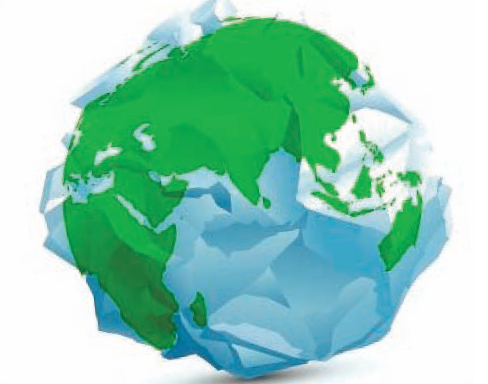by | Dr Raslan Ahmad & Ahmad Razif Mohamad
Have you ever thought about what your children actually learn in school? Education is perceived as an essential component of our society, but how does the reality of our children’s day-to-day education correlate with the country’s key development goals?
Looking at the macro level, one of the key elements to be recognized as a developed nation by 2020 is the foundation resource of human capital. It is, without a doubt, a crucial element for Malaysia to build up the necessary supply of human capital to meet the demand for Malaysia’s cross sectorial Science & Technology (S&T) goals, which are based on the country’s economic indicators such GDP at 6% per annum with the support of entry point projects (EPPs) under the New Key Economic Areas (NKEAs). With new high impact projects coming into the picture, it will be vital to have a sustainable supply of highly skilled workers to support these government programmes.
EDUCATION IN MALAYSIA
An Overview
The Malaysian education system encompasses students from pre-school through university. Pretertiary education (pre-school to secondary education) is under the authority of the Ministry of Education (MOE) while the custodian for tertiary education is the Ministry of Higher Education (MOHE).
Primary education (6 years) and secondary education (5 years total—comprised of 3 years of lower secondary and 2 years of upper secondary) make up 11 years of education. In this delicate stage, a total of 4 national exams are placed in specific years of schools: Ujian Penilaian Sekolah Rendah (UPSR) at standard 6, Penilaian Menengah Rendah (PMR) at Form 3, Sijil Pelajaran Malaysia (SPM) at Form 5 and Sijil Tertinggi Pelajaran Malaysia (STPM) at upper 6. Most of the students with good grades are able to apply for pre-U (or matriculation using SPM results) because of grades that show that the students are able to cope with university-level education. At the tertiary education level, institutions of higher learning offer courses leading to the awards of certificate, diploma, first degree and higher degree qualifications (in academic and professional fields). The duration of study for a basic bachelor degree programme is 3 years and the courses of study at this level are provided by both the public and private education sectors, attracting many international students.
Looking at the current education landscape in Malaysia, it is important to understand that the whole value chain must head toward the same vision and direction in order to reach the national agenda to become a developed nation. Every development point (from primary to secondary or secondary to tertiary) must provide continuity and support.
The issues
One of the major issues that Malaysia has been battling is meeting the human capital demand that will be necessary in 2020. Currently, Malaysia is ranked 21st in the Global Competitiveness Report by the World Economic Forum., which highlighted that Malaysia has one of the most efficient and sound financial sectors (just behind Singapore and Hong Kong), highly efficient markets (ranked 15th) and shows improvement of the macroeconomic situation (despite a 5% budget deficit of GDP). To further move up the scale and meet the National Vision 2020, Malaysia needs to improve performance in education and technology readiness, improve access to higher education and training, and increase enrolment rates of secondary and tertiary education. Looking at these issues, it is clear that the value chain of the educational system must be in sync to meet the demand of human capital trained in science and technology by the year 2020.
Currently, Malaysia is unable to supply the needed amount science candidates for tertiary education (60 RSE by 2020). In reality, the science stream is a minority compared to its other counterpart programs such as Arts, Vocational, etc. In 1967, the Higher Education Planning Committee proposed that the science to arts ratio should be 60:40 in order to fulfill the future demand of a developing nation. Ministries and related agencies have conducted various workshops and policy changes to address the issues. But, despite various policies and action plans put in place, this target has yet to be achieved.
One recommendation to move closer to this goal is to increase the involvement of students in the science stream at secondary and tertiary levels by introducing inquiry based science education (IBSE) at both primary and secondary levels. The beauty of the IBSE teaching methodology is that it is designed to be inclusive for both weak and excellent students. Secondly, we recommend strengthening the quality and relevance of S&T in schools. It is important to ensure that the scientific knowledge that is passed along to students is of the highest quality & standards. Lastly, we recommend increasing and strengthening R&D related to Science and Mathematics Education. It is important for policy makers to draft policies using the right data and also for agencies to implement policies in the best strategic way with interest of the Rakyat.
Science education is not only an issue in Primary and Secondary education; tertiary education also plays an important role after the science “baton” has been passed to upper-level students. According to Majlis Penyelidikan dan Kemajuan Sains Negara, Malaysia needs a workforce of 493,830 people in RSE by 2020 to support the current government initiatives in ETP, GTP, and NEM. This means that the rate of increase of RSE should be about 31% per year.
There must be continuity and a sustainable approach between the two primary areas (primary-secondary education and tertiary education) to ensure an adequate supply of highly skilled human capital across the board. The goal is clear, but how can we achieve it?










